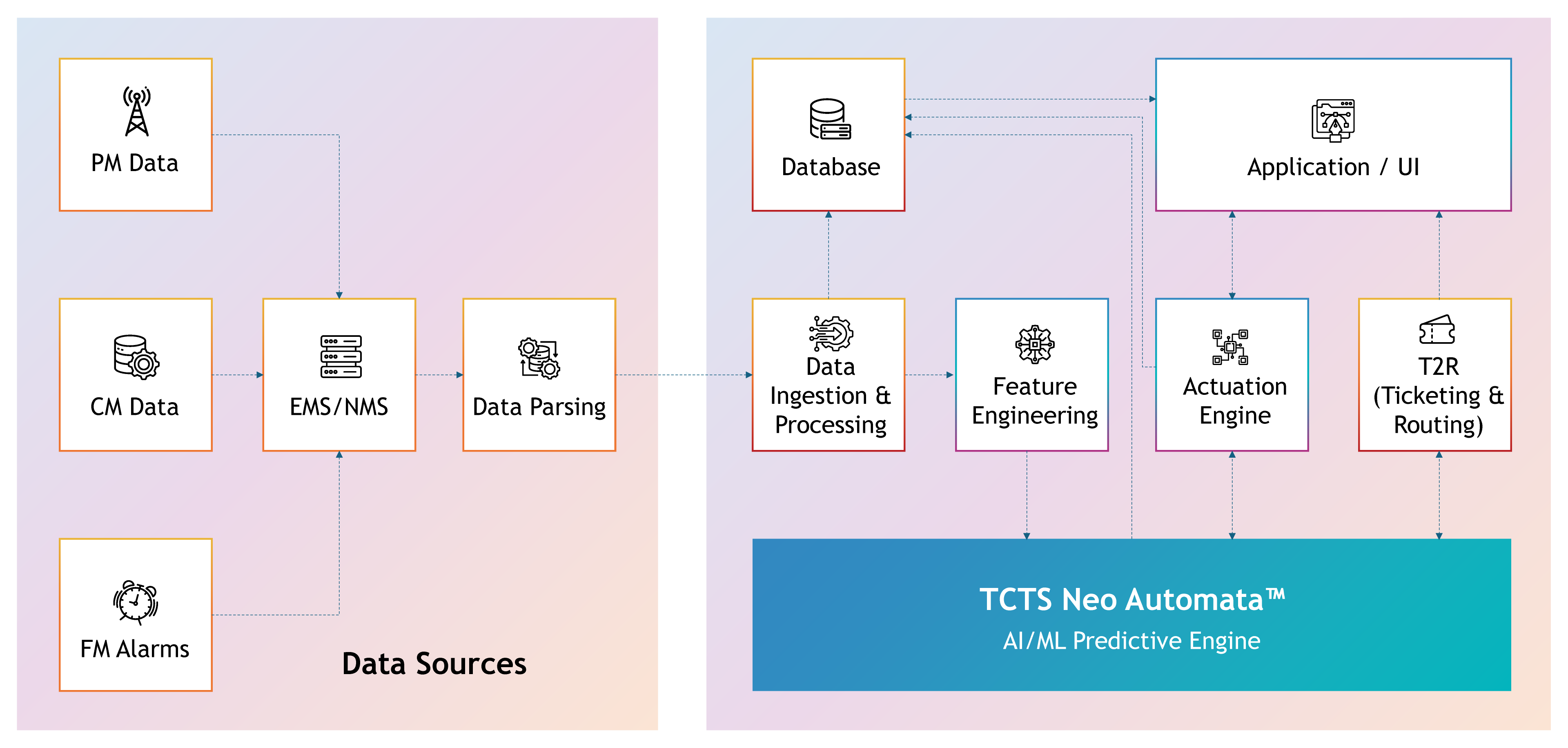Overview
As mobile data consumption surges and 5G adoption accelerates, communication service providers (CSPs) face mounting pressure to deliver seamless, high-quality connectivity. Traditional traffic management methods – such as static or rule-based algorithms that distribute traffic based on predefined criteria – often fall short in dynamically evolving network environments, leading to congestion in hotspot areas and underutilization of adjacent cells.
TCTS’ AI-driven Traffic Load Balancing solution addresses this challenge head-on to intelligently balance traffic across radio cells. By dynamically tuning RF parameters and managing Cell Individual Offset (CIO) layers, operators can enhance throughput, accessibility, and resource efficiency, while simultaneously reducing churn and operational overheads.
Legacy RF Strategies are no longer sufficient in 4G/5G environments
In 4G networks, static handover parameters, inconsistent cell reselection strategies, and inefficient carrier aggregation frequently cause poor traffic distribution. Such issues result in call drops, low throughput, and suboptimal use of radio resources in high-demand areas.
Network performance management in 5G networks is further compounded by frequently changing network conditions and the influx of data from a diverse range of devices. AI-based load balancing seems a promising solution for balancing the dynamic traffic demand and alleviating the congestion among networks and improving overall performance.
Deploying AI to Drive Intelligent Load Distribution
TCTS’ intelligent Traffic Load Balancing solution uses machine learning models and historical traffic analytics to predict anomalies, identify root causes, and recommend targeted RF optimizations. The system dynamically adjusts parameters, including:
- Cell reselection priorities
- Handover thresholds
- Layer-specific and band-specific strategies
- QoS Load Balancing with CQI, SINR

Fig – TCTS Neo Automata™ for Traffic Loading Balancing
(Using traffic data and predictive modelling, the system anticipates congestion and proactively optimizes resource allocation, leading to efficient traffic distribution and improved network performance)
Delivering Tangible Results
The solution delivers measurable benefits for CSPs, including improved throughput and reduced manual effort.
- Up to 60% reduction in manual interventions
- Improved throughput in high-demand areas
- Optimized resource utilization across spectrum and hardware
- Faster resolution times for congestion-related issues
- Improved network resilience and readiness for future 5G applications
By intelligently redistributing traffic through predictive analytics and dynamic RF parameter tuning, networks operators can avoid traffic overload and unlock greater network efficiency.





